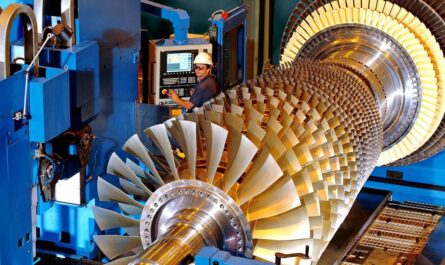Advanced Energy Storage: The Future of Power Generation
Introduction
Energy storage is poised to dramatically transform the power sector in the coming decades. Dwindling fossil fuel reserves, growing environmental concerns around greenhouse gas emissions, and rapidly declining costs of renewable energy and energy storage technologies are accelerating the adoption of advanced energy storage solutions. Energy storage allows for the capture and storage of energy produced at one time for use at a later time, helping balance energy supply and demand. It plays a pivotal role in modernizing aging power grids and facilitating higher integration of renewable energy sources like solar and wind. This article examines the latest trends driving innovation in advanced energy storage technologies and their increasing role in realizing a more flexible, reliable and sustainable power supply.
Batteries: Enabling the Renewable Energy Revolution
Batteries have emerged as the preferred energy storage solution to support intermittent renewable power sources. Lithium-ion battery technology, first popularized in consumer electronics, has seen tremendous cost reductions through scale and is powering the energy storage revolution. Both utility-scale and behind-the-meter battery storage installations are surging, driven by plummeting costs that are projected to fall another 60% over the next decade. By storing excess solar and wind energy produced during off-peak hours for usage when the sun isn’t shining or wind isn’t blowing, batteries are helping to improve renewable energy adoption and grid reliability. They provide valuable ancillary grid services like frequency regulation that conventional power plants alone cannot supply. Battery makers are innovating new chemistries like lithium iron phosphate, lithium titanate and lithium nickel manganese cobalt oxide that offer improved safety, lifespan and cost profiles. Combined with their modularity, this is spurring the growth of large “battery farms” and “virtual power plants” capable of providing electricity for hours or even days.
Advances in Flow Battery Technology
While lithium-ion batteries dominate today due to their energy density advantages, flow batteries are emerging as a promising competitor for large-scale stationary storage applications. In a flow battery, chemical components of the battery are stored in external tanks instead of within the device itself. This allows the power and storage capacity of the system to be independently scaled by increasing the size of the tanks. Moreover, since the active materials are liquids flowing through a cell, there are no limitations on the number of charge-discharge cycles like conventional solid-electrode batteries. Vanadium and zinc-bromine are the most widely used battery chemistries today. Recent years have seen significant performance upgrades and cost reductions as a result of materials innovation and larger manufacturing scale. Flow battery manufacturers are now focussing on addressing issues like self-discharge, enhancing energy density and lowering balance of system costs to compete better on price with lithium-ion. Their ability to provide energy storage from the megawatt-hour to gigawatt-hour scales and 8 hour or longer daily duration makes them very complementary to intermittent wind and solar resources.
The Rise of Compressed Air Storage
In compressed air energy storage (CAES), energy is stored via the compression and storage of air at high pressure in underground caverns, pipelines or tanks. When power is needed, the compressed air is released to drive turbines that generate electricity. The first CAES plant was built in Germany in 1978, with the technology remaining commercially niche until recently. Newer “adiabatic” CAES designs that insulate the expansion process are achieving round-trip efficiencies close to 50-60%, compared to about 40% for earlier “diabatic” models. With no electrochemical degradation over time unlike batteries, CAES can economically deliver multi-hour storage capacity up to the gigawatt-hour level for the grid. It does require unique geological features which some nations have taken advantage of. Several new projects are under development, including the Texas-based 316 MW ADELE project that aims to lower costs further through integration with wind and solar parks. CAES could potentially become the lowest-cost option for meeting peak demand with its ability to provide sustained, on-demand power over long durations.
The Potential of Hydrogen Energy Storage
Hydrogen’s potential as an energy carrier has gained increased focus globally of late, driving parallel innovation in hydrogen energy storage. In this technology, excess electricity from renewables is used to produce hydrogen from water through electrolysis. The hydrogen can then be stored and transported in solid or gaseous form for extended periods, before being converted back to electricity through fuel cells or combustion turbines. Hydrogen can also power vehicles and be injected directly into natural gas pipelines. Projects are exploring different storage mediums like liquid organic hydrogen carriers, subsurface caverns or lined rock caverns. Fuel cells have seen significant improvements in efficiency and lifespan. Advanced catalysis and membrane technologies are also cutting costs. At scale, a “green hydrogen economy” based on renewable energy could fundamentally transform the energy landscape by enabling long-term, seasonal storage that mirrors production and demand trends. Initial applications focus on decarbonizing transportation, remote power, steel production and other industrial processes but the model also holds promise for bulk storage on the grid.
Conclusion
As the energy sector transitions towards cleaner and distributed resources, advanced energy storage systems will play an indispensable role in modernizing aging infrastructure to support 21st century needs. Batteries, flow batteries, CAES, hydrogen storage and other emerging technologies each bring unique attributes optimized for various applications. Solutions will need to be deployed together as strategic hybrid energy portfolios to achieve diverse services across different timescales. Policy support, technology advancement and falling costs will drive further penetration of these storage options into both utility and behind-the-meter markets. Energy storage is poised to become one of the defining technologies of this decade as the foundation is laid for long-term sustainable and resilient energy systems worldwide.
*Note:
1. Source: Coherent Market Insights, Public sources, Desk research
2. We have leveraged AI tools to mine information and compile it




